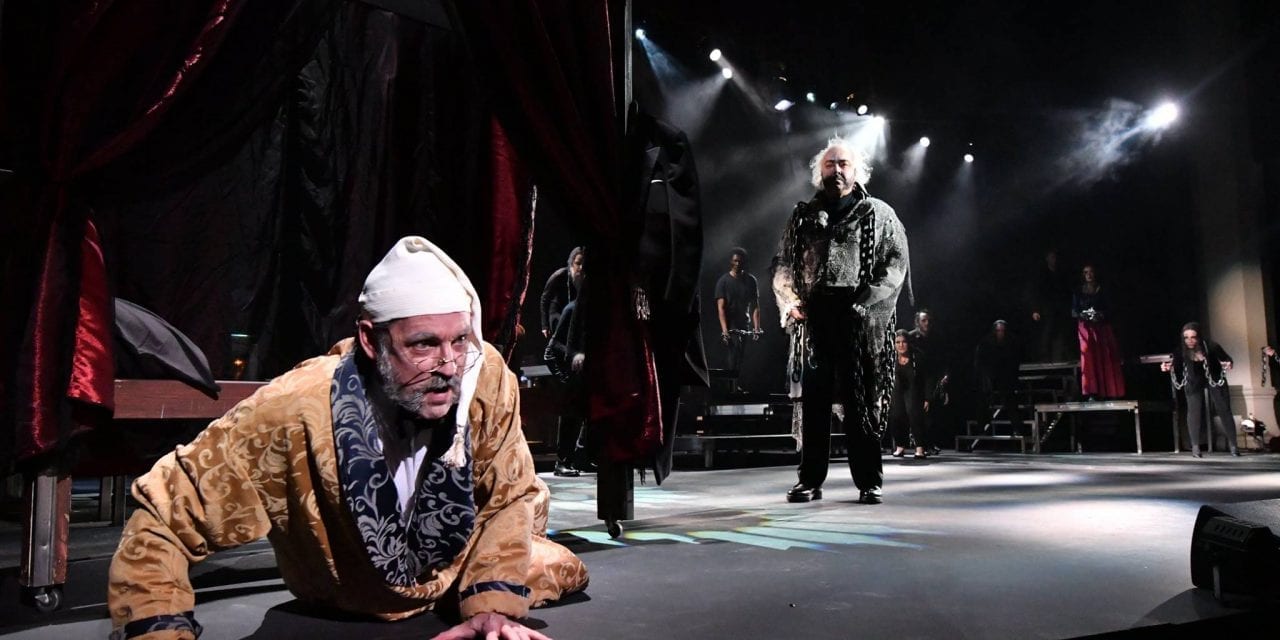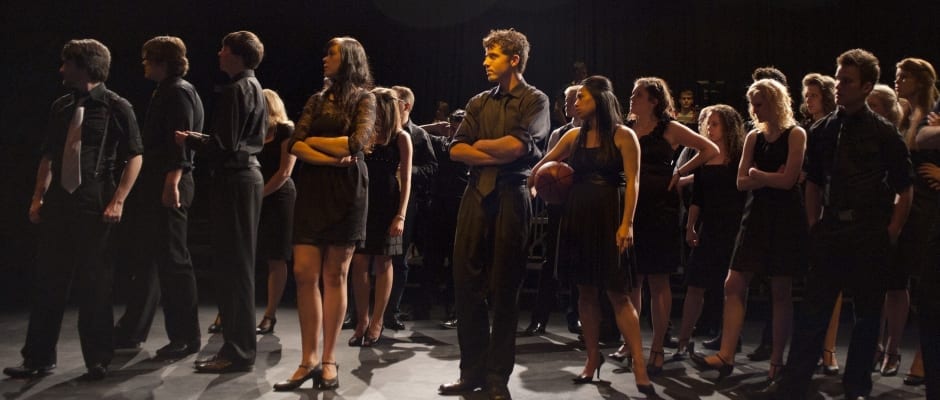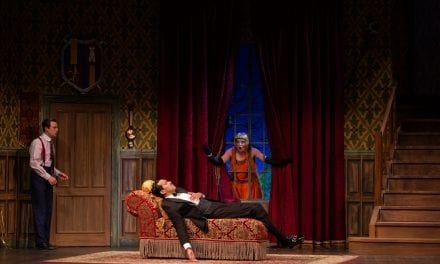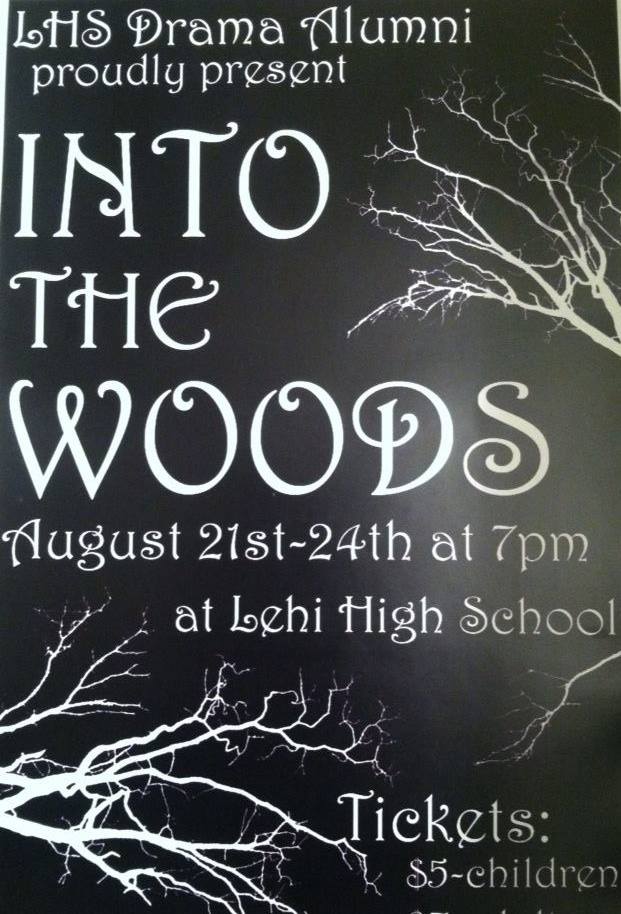SALT LAKE CITY — How many crippled boys can be miraculously healed through the magic of Christmas? On the stage of the Grand Theatre, the answer is two per night.

Show closed December 1, 2018.
I’m talking, of course, about the Grand’s annual holiday tradition: a double-header of festive operettas, Amahl and the Night Visitors and A Christmas Carol. The two delightful, complimentary works were produced in partnership with the University of Utah School of Music, with most of the actors and staff coming from the U.
Amahl and the Night Visitors, composed in 1951 by Gian Carlo Menotti for NBC television, is an one-act English opera about the Three Kings’ journey to see the Christ child. The operetta imagines them stopping during their journey at the humble home of a Middle Eastern boy named Amahl and his mother.
 Alyssa Liu was a wonderful Amahl and commanded the stage with youthful exuberance, inquisitiveness, and pluck. Both her and the mother character (played by Jana Conrad) displayed remarkable singing chops, resulting in a very entertaining little show. Rounding out the small cast were Jordan Tolman, Alexander Norton III, and John Kovalenko as the three kings. They were backed by the superb Salt Lake Symphony, who added a tremendous amount of texture to the show. What a joy to have live, quality music! If only every Christmas play in Utah had the same.
Alyssa Liu was a wonderful Amahl and commanded the stage with youthful exuberance, inquisitiveness, and pluck. Both her and the mother character (played by Jana Conrad) displayed remarkable singing chops, resulting in a very entertaining little show. Rounding out the small cast were Jordan Tolman, Alexander Norton III, and John Kovalenko as the three kings. They were backed by the superb Salt Lake Symphony, who added a tremendous amount of texture to the show. What a joy to have live, quality music! If only every Christmas play in Utah had the same.
 Despite its serious premise, Amahl and the Night Visitors entertained from beginning to end with solid music and a surprising amount of laughs. (When the visitors first knocked on the door, Amahl exclaimed to his exasperated mother “The kings are three! And one of them is black!”) An ensemble of University of Utah students also livened things up as neighboring shepherds who appeared for a lengthy dance number.
Despite its serious premise, Amahl and the Night Visitors entertained from beginning to end with solid music and a surprising amount of laughs. (When the visitors first knocked on the door, Amahl exclaimed to his exasperated mother “The kings are three! And one of them is black!”) An ensemble of University of Utah students also livened things up as neighboring shepherds who appeared for a lengthy dance number.
In the end, Ahmal and the Night Visitors was a simple, cute show with lots of heart, no surprises and perfect for families. As artistic director Robert Breault assured the audience, it may be an opera but the music isn’t “overly intellectual.”
But wait, there was more! I won’t spoil how Scrooge entered the picture, but it was certainly one of the savvier moments of the night and tied the two shows together perfectly.
 James Bobick starred as Scrooge in A Christmas Carol and was brimming with stage presence and a terrific baritone voice. This Christmas Carol was composed by local Mike Leavitt (not the former governor), who also directed the symphony in this production. His rendition told the familiar tale at a quick clip of around an hour, and featured just the highlights. While I mourned the loss of so much great material, a shorter version does have its uses, and paired perfectly with the equal length Amahl and the Night Visitors.
James Bobick starred as Scrooge in A Christmas Carol and was brimming with stage presence and a terrific baritone voice. This Christmas Carol was composed by local Mike Leavitt (not the former governor), who also directed the symphony in this production. His rendition told the familiar tale at a quick clip of around an hour, and featured just the highlights. While I mourned the loss of so much great material, a shorter version does have its uses, and paired perfectly with the equal length Amahl and the Night Visitors.
Breault himself took a strong turn as Jacob Marley and showed his students how it’s done. Mason McDermaid also stood out as Scrooge’s cheery nephew Fred and displayed tremendous singing range, skill, and acting ability—a perfect foil to the crusty protagonist.
The most surprising thing about the operatic version of A Christmas Carol is how it unlocked a rather overlooked character, the Ghost of Christmas Future. Traditionally portrayed as a solemn mute, the opera format enabled the character (portrayed by Sarah Welker) into new realms of possibility. Instead of staying silent, she sang wordless arias which conveyed beauty and meaning, and complimented Scrooge’s agonized pleas in the emotional graveyard scene. It is almost as if the part was meant to be operatic, and I applaud the show’s original creators (Leavitt and Anthony Buck) for it.
Fezziwig’s ball was another highlight, which seamlessly blended a large dance number (choreographed by Kyra Chantel Furman) with the ill-fated meet cute of Scrooge and Belle. The way the score’s traditional English fiddle tune morphed into a festive and danceable “I Saw Three Ships” was impressive. The integration of “Westminster Quarters” to indicate the passage of time throughout the show was also admirable.
Technically speaking, the shows were directed by Elizabeth Peters and Michelle Pederson. Costumes and sets were both well done, and Amahl and the Night Visitors definitely had a Savior of the World vibe to it. Still, a few things that could be improved: the Wise Men’s repartee could be better, and their acting could be sharper and more focused. Their singing parts would be better suited for more mature voices, but the students did a fine job regardless. Old Joe and the Char Woman were also hard to understand, and some of the shepherds overacted. And Amahl’s spontaneous healing was a pretty saccharine unnecessary plot point. But if Buddy the Elf taught us anything, perhaps Christmas is the season when it’s OK to add syrup to our operatic spaghetti, so to speak. At least, neither show was near “Christmas Shoes” territory.
In the end, these two well-paired operas seamlessly combined to tell the Greatest Story Ever Told (the Bible) and perhaps the Second Greatest Story Ever Told (A Christmas Carol). And, yes both Tiny Tim and Amahl’s legs get saved—a “two crutch Christmas double bill” just as the program promised.





